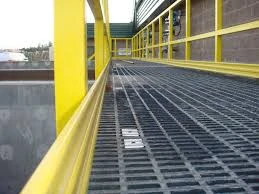
-
 Afrikaans
Afrikaans -
 Albanian
Albanian -
 Amharic
Amharic -
 Arabic
Arabic -
 Armenian
Armenian -
 Azerbaijani
Azerbaijani -
 Basque
Basque -
 Belarusian
Belarusian -
 Bengali
Bengali -
 Bosnian
Bosnian -
 Bulgarian
Bulgarian -
 Catalan
Catalan -
 Cebuano
Cebuano -
 China
China -
 China (Taiwan)
China (Taiwan) -
 Corsican
Corsican -
 Croatian
Croatian -
 Czech
Czech -
 Danish
Danish -
 Dutch
Dutch -
 English
English -
 Esperanto
Esperanto -
 Estonian
Estonian -
 Finnish
Finnish -
 French
French -
 Frisian
Frisian -
 Galician
Galician -
 Georgian
Georgian -
 German
German -
 Greek
Greek -
 Gujarati
Gujarati -
 Haitian Creole
Haitian Creole -
 hausa
hausa -
 hawaiian
hawaiian -
 Hebrew
Hebrew -
 Hindi
Hindi -
 Miao
Miao -
 Hungarian
Hungarian -
 Icelandic
Icelandic -
 igbo
igbo -
 Indonesian
Indonesian -
 irish
irish -
 Italian
Italian -
 Japanese
Japanese -
 Javanese
Javanese -
 Kannada
Kannada -
 kazakh
kazakh -
 Khmer
Khmer -
 Rwandese
Rwandese -
 Korean
Korean -
 Kurdish
Kurdish -
 Kyrgyz
Kyrgyz -
 Lao
Lao -
 Latin
Latin -
 Latvian
Latvian -
 Lithuanian
Lithuanian -
 Luxembourgish
Luxembourgish -
 Macedonian
Macedonian -
 Malgashi
Malgashi -
 Malay
Malay -
 Malayalam
Malayalam -
 Maltese
Maltese -
 Maori
Maori -
 Marathi
Marathi -
 Mongolian
Mongolian -
 Myanmar
Myanmar -
 Nepali
Nepali -
 Norwegian
Norwegian -
 Norwegian
Norwegian -
 Occitan
Occitan -
 Pashto
Pashto -
 Persian
Persian -
 Polish
Polish -
 Portuguese
Portuguese -
 Punjabi
Punjabi -
 Romanian
Romanian -
 Russian
Russian -
 Samoan
Samoan -
 Scottish Gaelic
Scottish Gaelic -
 Serbian
Serbian -
 Sesotho
Sesotho -
 Shona
Shona -
 Sindhi
Sindhi -
 Sinhala
Sinhala -
 Slovak
Slovak -
 Slovenian
Slovenian -
 Somali
Somali -
 Spanish
Spanish -
 Sundanese
Sundanese -
 Swahili
Swahili -
 Swedish
Swedish -
 Tagalog
Tagalog -
 Tajik
Tajik -
 Tamil
Tamil -
 Tatar
Tatar -
 Telugu
Telugu -
 Thai
Thai -
 Turkish
Turkish -
 Turkmen
Turkmen -
 Ukrainian
Ukrainian -
 Urdu
Urdu -
 Uighur
Uighur -
 Uzbek
Uzbek -
 Vietnamese
Vietnamese -
 Welsh
Welsh -
 Bantu
Bantu -
 Yiddish
Yiddish -
 Yoruba
Yoruba -
 Zulu
Zulu
Effective Strategies for Preventing and Managing Corrosion in Various Environments
Understanding Corrosion Solutions Mitigating Metal Deterioration
Corrosion is a natural process that degrades metals and alloys, leading to significant structural and economic issues across various industries. The phenomenon occurs when metals react chemically with their environment, primarily with oxygen and moisture, resulting in the formation of oxides, hydroxides, or other compounds. To combat this universal challenge, industries are increasingly investing in corrosion solutions designed to enhance the longevity and durability of metal structures, equipment, and components.
What is Corrosion?
Corrosion is often defined as the electrochemical process of metal deterioration through oxidation. It can manifest in several forms, including uniform corrosion, pitting, galvanic corrosion, and crevice corrosion, each affecting metals differently. For instance, uniform corrosion affects the entire surface of a metal equally, leading to a gradual decrease in thickness. In contrast, pitting corrosion creates small, localized holes, which can be more damaging and harder to predict. Understanding these variations is crucial for developing effective corrosion solutions.
Causes and Factors Influencing Corrosion
Several factors contribute to corrosion, including environmental conditions, the presence of moisture, and the characteristics of the metal itself. High humidity, temperature fluctuations, and exposure to salts or acids can accelerate corrosion processes. Moreover, dissimilar metals in contact with one another can lead to galvanic corrosion, where the more noble metal protects the less noble one, leading to its accelerated degradation. Awareness of these factors is essential for implementing appropriate solutions to mitigate corrosion.
Corrosion Prevention Techniques
Preventing corrosion requires a multifaceted approach, integrating several techniques and strategies. Here are some of the primary corrosion solutions employed across industries
corrosion solution

1. Coatings One of the most common methods to prevent corrosion is applying protective coatings. Paints, varnishes, and plating materials create a barrier between the metal and the corrosive environment. For example, galvanization involves coating steel or iron with a layer of zinc, which not only protects the underlying metal but also sacrifices itself in the event of damage, a process known as sacrificial protection.
2. Corrosion Inhibitors These are chemical compounds added to liquids (like acids or water) that reduce the rate of corrosion. They form a protective film on the metal surface or decrease the aggressiveness of the corrosive agent. Commonly used in oil pipelines, water systems, and cooling towers, inhibitors are an effective way to extend the life of metal structures.
3. Cathodic Protection This method involves making the metal structure a cathode in an electrochemical cell, thereby preventing it from oxidizing. Sacrificial anodes made of more reactive metals (like magnesium or zinc) are attached to the structure, corroding instead of the protected metal. This technique is frequently used in underground pipelines and tanks.
4. Material Selection Choosing the right materials for construction is fundamental to corrosion prevention. Stainless steel, aluminum, and certain alloys offer superior resistance to corrosion. Engineers must carefully consider the environment in which the materials will be used to make informed decisions about material selection.
5. Regular Maintenance and Inspection Implementing routine inspections and maintenance schedules can help identify early signs of corrosion. This proactive approach not only prolongs the life of structures and components but also minimizes costly repairs and replacements.
Conclusion
Corrosion is an inevitable challenge in the lifecycle of metal products, but it is one that can be effectively managed through various corrosion solutions. By understanding the causes and taking proactive measures—such as coatings, inhibitors, cathodic protection, proper material selection, and regular maintenance—industries can significantly reduce the impact of corrosion on their assets. Investing in these solutions not only ensures the longevity of metal structures but also promotes safety, efficiency, and sustainability in operations. As technology advances, further innovations in corrosion management are anticipated, paving the way for even more effective strategies to combat this age-old problem.









